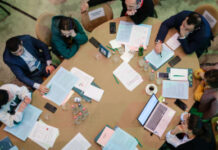By Hagop Vartivarian
From November 13-18, for the first time in history, the Catholicos of All Armenians went on a pastoral visit from Holy Echmiadzin to Damascus, the historic city of the erstwhile Umayyads, the first Muslim dynasty (661-750), and the capital of the present-day Syrian Arab Republic. As expected, the Damascus Armenian community, as a whole, welcomed its pontiff with open arms.
During the past half century, Damascus witnessed the saddest pages of our contemporary history, especially the days of our church split, beginning in 1956, and the fratricidal fighting resulting from that. Furthermore, ever since the day that the intervention of Vazken I, Catholicos of All Armenians, to put an end to the crisis within the Catholicosate of Cilicia and restore amity and legality failed due to the revolt against the authority of the Mother See and the Armenian Revolutionary Federation’s forcible establishment of its dominance over the Cilician Catholicosate, the Damascus Armenian community remained loyal to the supremacy of Holy Echmiadzin and, till this day, continues to extend its unmitigated love and respect to the Mother See.
In 1928, by the decision of the Administrative Council of the Patriarchate of Jerusalem, with the approval of the then patriarch, Archbishop Yeghishe Tourian and by unanimous decision of the St. James Brotherhood’s General Assembly, the jurisdiction of the diocese of Damascus, as well as that of the dioceses of Beirut and Latakia, Syria, was freely turned over to Catholicos Sahag Khabayian, the elderly occupant of the throne of the See of Cilicia in exile, in order for the latter to have authority over a few dioceses. However, the Damascus Armenian community, led by its patriotic national and political organizations — ADL, SD Hunchak Party and AGBU — generally speaking, remained firm in its faith, and the general populace directed its love and faith solely to Holy Echmiadzin, while holding the See of Cilicia in respect.
The leaders of these organizations of ours didn’t have an easy time of it, especially in the wake of the Cold War, when a heated political atmosphere prevailed throughout the Middle East and from which the Armenians of Damascus could not, of course, remain exempt.
Unfortunately, instead of striking Turks, some Armenians struck other honorable, law-abiding fellow nationals who displayed solicitude toward the traditions of the Armenian Church.
Thus, in 1956, when the then-Prelate of the Diocese of Damascus, Bishop Shavarsh Kouyoumdjian was in the diocesan office next to the church, working on his book about the history of the Armenians of Damascus, a 17-year-old youth, at the bidding of those in charge of the ARF at that time and with a pistol given by them to him, fired twice upon the bishop. Fortunately, His Grace Shavarsh was rushed to the hospital where he was saved from certain death. He had cultivated the best of relations at the highest level with the governmental authorities at that time. The country’s president was Shukri al-Quwatli, while the foreign minister was Sarraj.









